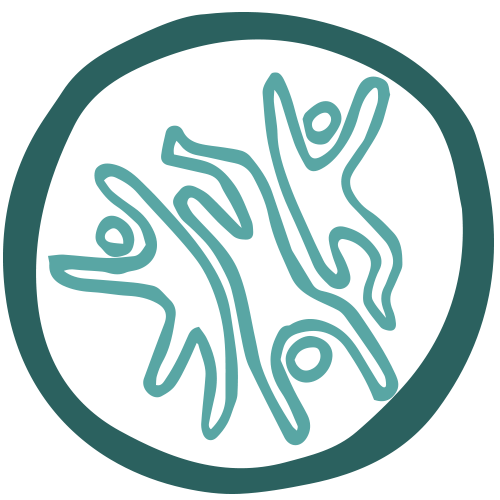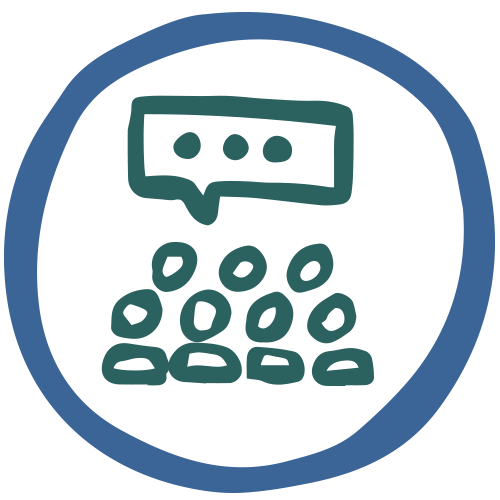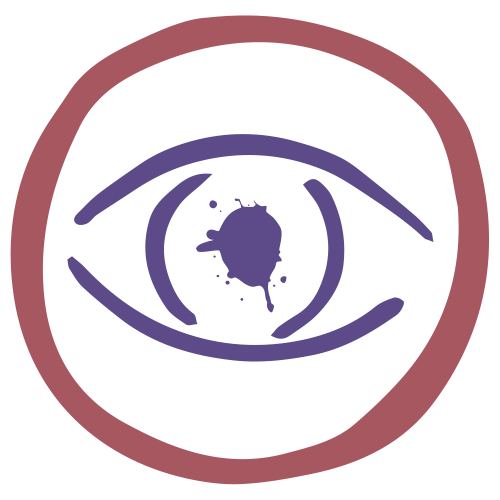The EveryBODY Matters Project
Some children find it difficult to name or express the feelings they have about gendered societal pressures to look or move in a certain way.
Some need safe spaces to express difficult feelings (e.g. anger, powerlessness, frustration) in their own peer cultures and wider relationships. These include feelings about real world issues that they have little control over (e.g. social injustice, poverty, discrimination).
Building upon a previous AGENDA case study “Under Pressure”, the EveryBODY Matters project invited two primary schools in the south Wales valleys to support children and their teachers to create a safe and inclusive environment to explore a range of emotions through movement. Children were offered different creative activities, from making wire-figures to body-mapping, to help them notice and share these emotions with others. The wider aim was to explore, embody and connect children’s awareness of micro and macro politics: or as one girl put it, “STOP KICKING. STOP TERRORISM. BE NICE. START MAKING PEACE IN THE WORLD” or as one boy put it, “LET GIRLS DO BOYS’ SPORTS. STOP SEXISM. START MAKING THE WORLD A MORE EQUAL PLACE”.
Jên Angharad, a choreographer, Heloise Godfrey-Talbot, a visual artist and film-maker, and Emma Renold a Professor at Cardiff University co-created eight 2 hour sessions over four months to explore what it means to feel and move with how EVERY BODY MATTERS, in all their difference and diversity.
![]()
Watch the digital story of the EveryBODY Matters Project:
EveryBODY Matters from Emma Renold on Vimeo.
“When I feel happy it starts inside my mouth and comes out my cheeks. When I’m sad I can feel a prickling on my legs. When I’m not sure if I’m sad or happy I can feel it in my tummy”
Research tells us that many children struggle with developing a positive body image and gender, sexual and racial norms play a big part in this struggle, along with other differences that make a difference (e.g. differently abled bodies or neuro-diverse bodies).
However, despite the many resources available to enhance children’s critical media literacy or social justice activism on bodily harm and violence, few projects or resources work directly with or on the body.
1: Wiring our bodies
Each class created little people out of coloured pipe-cleaners to express how they felt about starting the EveryBODY Matters project. They placed them into a little box and Jên and Emma gifted them to the children in the partner school. The first movement session began with opening the boxes. Each child selected a wire body and were encouraged to try on its pose and imagine the emotion it be might be expressing. Taking care of this fragile body form and its feelings was an important aim for this activity.
2: Feelings Run(a)way
During each session a feelings run(a)way was rolled out and taped to the floor of the school hall or classroom. Coloured felt tips were placed around its edge.
At the beginning and end of each session (or for those that wanted a bit of time-out from the movement work) children were invited to share the feelings through words and pictures.
3: Moving (with) our feelings
“Attunement (verb) – to make aware, or become responsive to …”
How do we feel when we move a certain way?
Through a series of movement activities (e.g. walking, bending, stretching), Jên invited the children to attune first to how movements make them feel in their bodies. She then invited them to move with different feelings (e.g. joy, sadness, anger) and how these feelings travelled across different places on their body (e.g. arms, fingers, heads, tummies).
![]()
4: Body Lines: what feels ok and not ok
Working with a partner, one person lies down in a shape or pose that represents when they feel happy in their bodies. Each person draws around the outline of their partner’s bodies, being careful not to touch clothing or skin. The body outlines are flipped over and the pair begin again by creating a shape of when they feel sad or angry in their bodies.
Some children started to populate their body outlines with words or stories to express their chosen feeling. Jên asked us how what we felt on the inside, looked on the outside.
5: Moving with the feelings of others
Taking photos of the body outlines, Jên printed and laminated each shape. Like the Wired Bodies, each class received the body outlines of their partner school, and were invited to step into and move with the positive and negative feelings of each body shape. They did this by copying the shape with their bodies – a body freeze frame – and through creating a story about each outline.

6: Foiling our feelings so that everyBODY matters
Each child is given a shiny piece of tin foil. It reflects an image back to them if they look into it. Not a mirror image, a diffracted image. Exploring how feelings are felt in the body, each person presses the foil onto any area of their body (e.g. faces, arms, tummies) to create new shapes and new feelings.
We work towards understanding ‘foiling’ in ways that consider and call attention to every body’s unique and positive qualities – we begin to move with how EveryBODY Matters, in all their difference and diversity.
Feelings can be easier or harder to express depending on where we are and who we are with (e.g. at home, with friends, in school, online).
Foil (noun and verb) - anything that serves by contrast to call attention to another thing's positive qualities
Some feelings are foiled (disturbed, lost, changed) when communicated to others.
7: Feel how I feel
Guess what I’m feeling?
Have you ever had to work out how someone is feeling just by looking at them? No words, just body language.
Working with partners, we dedicated one of our movement sessions to guess how the other partner might be feeling from how they looked and moved. What was this like? Was it difficult? Did you guess right?
Is this how you’re feeling?
We then flipped this idea. We asked one partner (partner A) to tell the other partner (partner B) how they are feeling (e.g. unsure). Partner B then shows Partner A what that feeling might look like through a movement or a pose, and then asks, ‘is this how you’re feeling?’ Partner A then directs Partner B to alter their movement to show more accurately how they are feeling. They then swap, so each gets a turn to “feel how I feel”.
We explore how it is difficult to understand someone’s feelings by how they look or act. For example, one person’s expression of ‘pain’ might be another’s ‘joy’.

8: One body / every body
We place all the laminated body outlines in the shape of one large body. The children see the body as they enter the hall and spontaneously get inside. Some curl up in a leg or arm. Some sit in the head. Others lie in the tummy.
Each child places a sheet of foil inside the body. The body lights up, shining back at us. We peer in. We see ourselves and each other in new distorted & diffracted ways. Who am I? Who are you? Who are we? Weird! Wyred!
Using post-its each child selects a laminated body and chooses moments or activities of what makes their bodies smile or feel sad.
I feel good in my body when …
I’m on my bike
I’m at nan’s house
I help people
I play with my friends
I’m excited
I’m acrobatic
I do the splits
I’m swimming
I’m climbing
I play my PS4
I’m dancing
I go somewhere fun
I go to bed
Go to BODY REFORMING and UNDER PRESSURE? for more ideas and school case studies on making working with movement, image and sound to express and explore sensitive or difficult issues and feelings.
Listen to us read our STOP START plates here

9: Making activist selifes with the #stop-start plates
How we move, feel and act is influenced by our social, material and cultural environment.
From talking about the different ways in which gender stereotypes affect our own and people’s lives around the world, we used the STOP START agenda activity to write down what we wanted to prevent (stop) and change (start).
In this short 20 minute activity, children shared and connected their micro (e.g. being shouted at, or bullied) and macro (e.g. equality and peace) messages for change.
They recorded these messages into a smart phone and then made selfie plate portraits.
Sound artist Rowan incorporated their voices into a soundscape. Emma made a short vimeo and shared their messages for change at a United Nations event in New York on Advancing Gender Equality in Wales.
In the next movement session, they got to dance to their change-making message.

Attunement (noun) : “bringing into harmony”
We performed our final piece in front of our families and friends. Watch our movement film on the screen behind us here.

At the end of the evening, we invited them to share how they felt about our performance on a big roll of paper.
Here are some of their comments:

What EveryBODY Matters meant to us…
I liked making shapes with our feelings
It was all really fun and is one of the best things I’ve done in school
I enjoyed the one where we had to express our feelings to our partners and then they had to do it back to us
I also like it when we traced around each other.
If you were sad you had to trace around a sad spot and if you were excited or happy you had to trace around a happy spot
I liked the movement, because it’s getting everyone active
I liked when we done the big body out of the images
I liked doing the dances and different moves
I liked the part where we like got our shapes and we made little poses with them.
I liked how we walked with the plates and then you strike a pose
I enjoyed tracing bodies and when we were talking about equality and happiness and Donald Trump and all that!
I liked when we made our model with our faces with the tin foil, and when we had to draw our bodies out and put our feelings in it
Watch and listen to these comments here:
Children's Reflections on the EveryBODY Matters project from Emma Renold on Vimeo.

MakeaMove.org.uk– wellbeing through movement and music
See the annual BIG DANCE festival, where people of all ages learn a piece of origianl choerography, make it their own, then perform it wherever they are as part of a worldwide performance day.
For more on the power of dance, see National Youth Dance Wales and Community Dance.
Why young kids learn through movement
Why movement matters @ themovingchild.com
Welsh Government’s #thisisme campaign challenges the impact of gender stereotypes for healthy relationships
Try the Felting Our Feelings starter activity
Find out how One Billion Rising used movement and dance to address violence against girls and women.
Examples from around the world on movement and dance activism

Click here to make your own Wyred Bodies!










